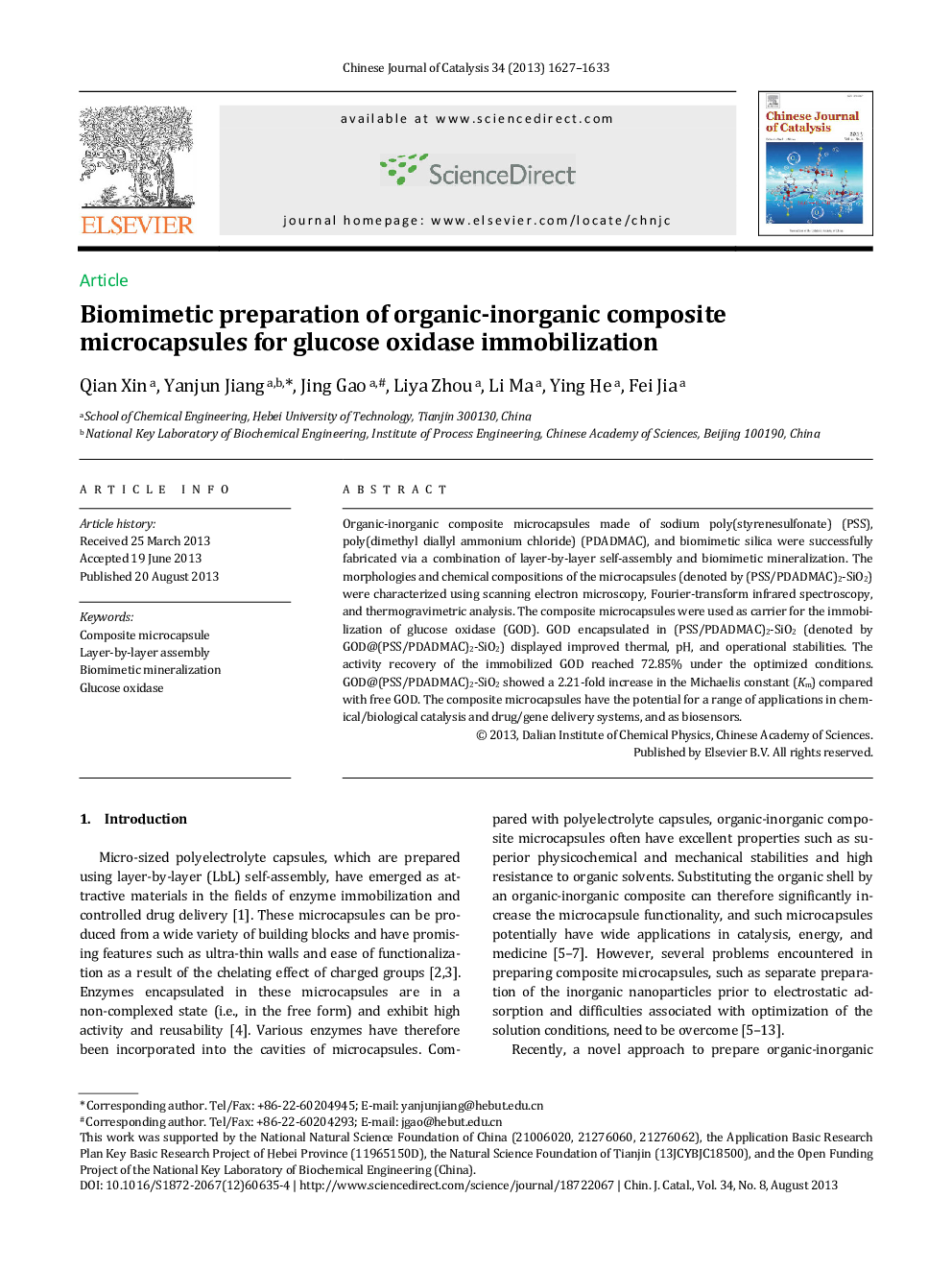| Article ID | Journal | Published Year | Pages | File Type |
|---|---|---|---|---|
| 59085 | Chinese Journal of Catalysis | 2013 | 7 Pages |
Organic-inorganic composite microcapsules made of sodium poly(styrenesulfonate) (PSS), poly(dimethyl diallyl ammonium chloride) (PDADMAC), and biomimetic silica were successfully fabricated via a combination of layer-by-layer self-assembly and biomimetic mineralization. The morphologies and chemical compositions of the microcapsules (denoted by (PSS/PDADMAC)2-SiO2) were characterized using scanning electron microscopy, Fourier-transform infrared spectroscopy, and thermogravimetric analysis. The composite microcapsules were used as carrier for the immobilization of glucose oxidase (GOD). GOD encapsulated in (PSS/PDADMAC)2-SiO2 (denoted by GOD@(PSS/PDADMAC)2-SiO2) displayed improved thermal, pH, and operational stabilities. The activity recovery of the immobilized GOD reached 72.85% under the optimized conditions. GOD@(PSS/PDADMAC)2-SiO2 showed a 2.21-fold increase in the Michaelis constant (Km) compared with free GOD. The composite microcapsules have the potential for a range of applications in chemical/biological catalysis and drug/gene delivery systems, and as biosensors.
Graphical AbstractGlucose oxidase (GOD) was immobilized in organic-inorganic composite microcapsules using a combination of layer-by-layer assembly and biomimetic mineralization. The encapsulated GOD exhibited distinct advantages in terms of thermal, pH, and operational stabilities.Figure optionsDownload full-size imageDownload as PowerPoint slide
